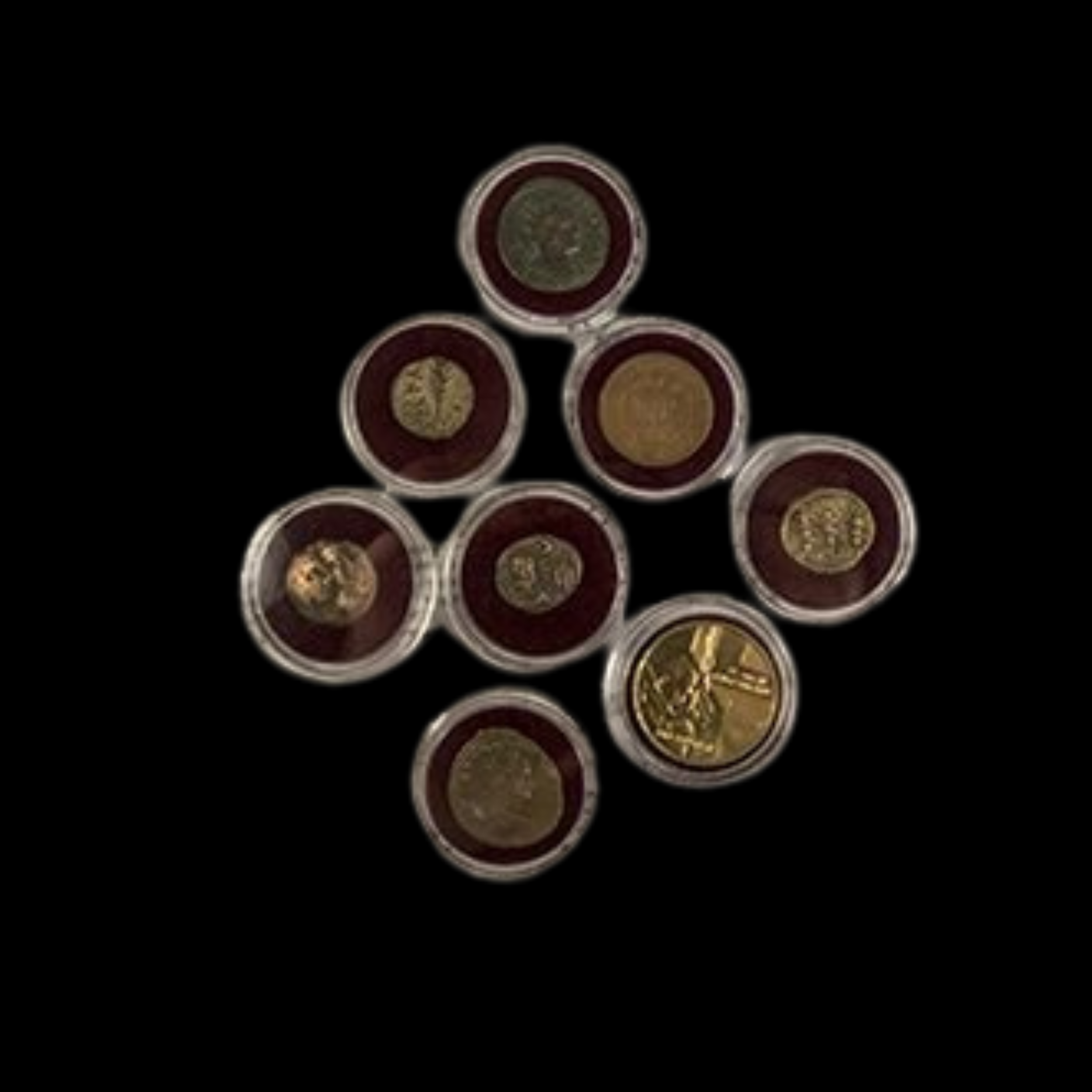 Image 1 of 10
Image 1 of 10

 Image 2 of 10
Image 2 of 10

 Image 3 of 10
Image 3 of 10

 Image 4 of 10
Image 4 of 10

 Image 5 of 10
Image 5 of 10

 Image 6 of 10
Image 6 of 10

 Image 7 of 10
Image 7 of 10

 Image 8 of 10
Image 8 of 10

 Image 9 of 10
Image 9 of 10

 Image 10 of 10
Image 10 of 10











Roman Bronze Coin of Emperor Constans (about 1,675-1,690 years ago)
The coins shown are representative examples of the grade and type, but not the actual specimens for sale. For details on NGC’s grading standards and definitions, please refer to our NGC Grading page.
This small bronze coin was issued under the authority of Emperor Constans, the youngest son of Constantine the Great who received control of the western provinces after his father's death. This coin represents the monetary system established by Constantine's dynasty during the late Roman Empire when Christianity was becoming the dominant religion throughout the Roman world.
Coin Description:
Front side: Portrait of Emperor Constans, typically facing right, wearing either a laurel wreath, pearl diadem, or helmet, with Latin inscription stating his name and titles
Back side: Common reverse designs include military standards, soldiers, victory figures, or Christian symbolism, accompanied by Latin inscriptions
Technical Details:
Bronze composition
Denomination: AE3/4 (a modern classification indicating a small bronze coin of the late Roman period)
NGC certified
Minted between 337-350 AD
Condition as certified by NGC
Historical Significance: Constans ruled during a pivotal transition period when the Roman Empire was evolving into what historians call the Byzantine Era. After Constantine the Great's death in 337 AD, the empire was divided among his three surviving sons: Constantine II, Constantius II, and Constans. Initially receiving Italy, Africa, and Illyricum (roughly the Balkans), Constans later defeated and killed his brother Constantine II in 340 AD, gaining control of Britain, Gaul (France), and Spain as well. A supporter of orthodox Christianity against Arianism, Constans maintained relative peace in the western provinces until he was overthrown by the usurper Magnentius in 350 AD, ending the direct male line of Constantine's dynasty in the west.
The coins shown are representative examples of the grade and type, but not the actual specimens for sale. For details on NGC’s grading standards and definitions, please refer to our NGC Grading page.
This small bronze coin was issued under the authority of Emperor Constans, the youngest son of Constantine the Great who received control of the western provinces after his father's death. This coin represents the monetary system established by Constantine's dynasty during the late Roman Empire when Christianity was becoming the dominant religion throughout the Roman world.
Coin Description:
Front side: Portrait of Emperor Constans, typically facing right, wearing either a laurel wreath, pearl diadem, or helmet, with Latin inscription stating his name and titles
Back side: Common reverse designs include military standards, soldiers, victory figures, or Christian symbolism, accompanied by Latin inscriptions
Technical Details:
Bronze composition
Denomination: AE3/4 (a modern classification indicating a small bronze coin of the late Roman period)
NGC certified
Minted between 337-350 AD
Condition as certified by NGC
Historical Significance: Constans ruled during a pivotal transition period when the Roman Empire was evolving into what historians call the Byzantine Era. After Constantine the Great's death in 337 AD, the empire was divided among his three surviving sons: Constantine II, Constantius II, and Constans. Initially receiving Italy, Africa, and Illyricum (roughly the Balkans), Constans later defeated and killed his brother Constantine II in 340 AD, gaining control of Britain, Gaul (France), and Spain as well. A supporter of orthodox Christianity against Arianism, Constans maintained relative peace in the western provinces until he was overthrown by the usurper Magnentius in 350 AD, ending the direct male line of Constantine's dynasty in the west.




























